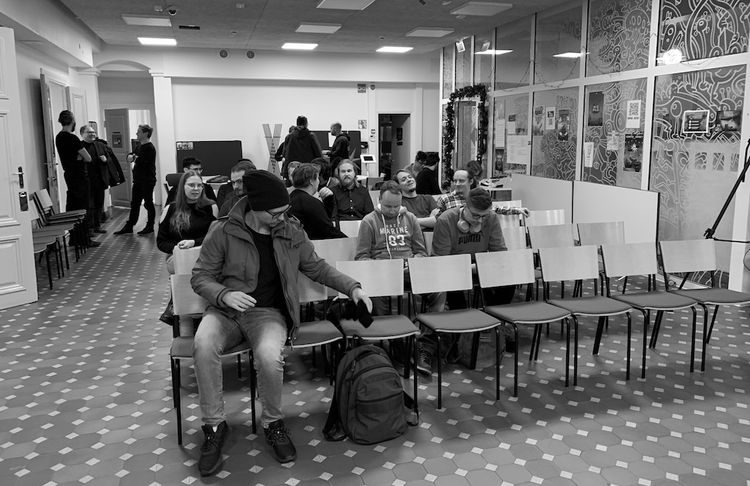EGD News #57 — Why Startups Fail


Sent on November 27th 2020.
If you aren’t a subscriber to EGD News, you can subscribe here.
😵 Why Startups Fail
Tom Eisenmann is a Professor of Business Administration at Harvard Business School. In 2021, his book “Why Startups Fail” is coming out, and it will reveal the information that his research has uncovered on startup failure.
On the NFX podcast, Tom shares how he defines failure. A founder might feel that they achieved things, social impact, uncommercial innovations that others can use to achieve great things. But from the investor’s perspective, a return on investment that is below 1X is a failure.
“[It was a failure when] early investors did not and never will make money.”
Examining a failed startup could be as easy as practicing “5 Whys,” from Toyota Production System. But the problem is that there often are several reasons and no one prevailing cause.
“[There’s] no single cause, but there are patterns and I saw some patterns repeated with early-stage failures.”
There are six distinct failure modes for startups. I’ll give my gaming startup perspective on all of these cases.
1. “A false start.”
Good founders/team/investors, but they start building too quickly and waste a cycle and their capital on a wrong first product.
As Tom mentions in the podcast, there are two kinds of founders: one is better at avoiding the issue because they bet less on their faith and expertise in the idea and data and validation. Belief causes people to move slowly.
- Belief-driven founder: riskier, but when right, can become huge.
- Validation driven founder: less risky.
In game dev: Every so often, an experienced gaming exec starts a new gaming studio with a stellar team and an audacious business idea. They hit the ground running, with tens of millions in the bank, but often took two years before the ship the first game. And when that first game isn’t a success, they might not get a second chance before they’ve run out of cash.
2. “Bad bedfellows.”
A good idea that never gets traction due to poor founder fit, weak team, and poor investor fit.
In-game dev: I talk about this a lot in the Long Term Game: the founders need to be aligned with the ambition level that they are going after. Once they are aligned, they can work on the company mission and the values that support the organization to achieve that mission.
Hiring great people is the hardest thing about startups. Focus on getting in the people who understand the audience as much as they know games. These are the great game makers and build the best games. After observing several companies first struggle to make a hit game, once they bring on the top-notch talent, whose ideas are unproven, but they are ideas that can be proved.
Founders don’t usually build hit games. They create the foundation, which then enables those hit games to be made. Supercell, Small Giant Games, and Next Games all had success with non-founders coming up with the winning games.
3. “False positive.”
You get off to a good start with early adopters, and then it turns out that mainstream demand doesn’t share the same needs, and you’ve mobilized the wrong resources to pursue the mainstream market.
In-game dev: You soft launch your mobile and bring in a few thousand players over a few days. Later, you struggle to captivate the bigger audience, perhaps because of the geo you picked or that it took six months between the soft launch and actual “hard launch”.
Best way to avoid: skip the soft launch phase and continue with a beta version, trickling players in on a constant stream. Enter a mode of developing games in public, where a rough piece of rock is shaped into a diamond.
Why it’s hard: requires sacrificing early players with lack of depth and quality, irritating code depth issues, smaller updates that don’t move the needle.
4. “Cascading miracles.”
In this failure mode, a company had an ambitious innovation plan and often a founder who could sell that plan, i.e., creating a reality distortion field. Because of the innovation scope, it will, unfortunately, take a long time to develop the product.
In-game dev: It’s been echoed many times that gaming is a hit-driven business. But it’s so much different from the movie business, which is also hit-driven. In gaming, you can launch MVPs (minimum viable product) and get engagement metrics early on. With this data, you can decide to rapidly and cost-effectively pivot to a new project. I wrote about this in my product strategy article in early 2020.
When a mesmerizing founder, the Steve Jobs of gaming, emerges, who dazzles the investors for tens of millions of dollars but neglects the advantages of early MVP tests, you can end up in situations where pivots become costly. Eventually, the company folds because they realized that it doesn’t have the cultural capabilities or structures to pivot into a culture that celebrates early MVP testing
5. “Help wanted”
In this failure, the later-stage startup has all the right metrics, CAC is smaller than LTV, and they have product-market fit. But then something happens in the market, which creates a downturn. You need to bring in the right people to help navigate this issue, but to find these people, you might need to spend months doing so. During this time, the existing team cannot navigate this problem, and the company goes down.
In-game dev: Zynga went through several rough patches from 2013 to 2016. In 2013, Zynga announced that they had lost half of their player base from the Facebook canvas games days and laid off 520 people. Don Mattrick came on board as CEO in 2013.
In 2014, Zynga Q1 results showed that daily active user numbers fell from 53 million to 28 million year-over-year. In July 2014, they opened up a studio in Florida, closing less than a year later.
Mattrick left in 2015, and founder Mark Pincus took the role of CEO.
It wasn’t until they hired Frank Gibeau as CEO in March 2016, when numbers started to go back up. In Q4 of 2017, revenue was $233.3 million, a 22% increase from the same quarter in 2016.
It took the company four years to find the right person to lead the company, after a rocky IPO and a nothing but smooth transition to mobile games.
6. “Speed trap.”
The founders see early traction that is “off the charts.” This means that the founders are allowed to push the gas peddle as hard as possible, raising enormous amounts of venture capital. So, you step on the gas, but the customers that arrive later aren’t nearly as attractive as the early adopters.
“You have all sorts of problem, and of course the right answer is to slow down and fix things, but you’ve got a lot of pressure to keep going and that’s where the speed trap comes.”
In-game dev: Any early indication of off-the-chart success in gaming can be read wrong. You get Day-1 retention numbers that are 60%. Any game developer would kill for those kinds of numbers.
Later, once the company is moving fast, there’s a realization that the player cohort was part of a so-called “Golden Cohort.” The first thousands of players are gaming’s early adopters. GameAnalytics did a study on Golden Cohorts, identifying that players in a Golden Cohort will:
- spend more in terms of frequency of transactions;
- be prone to spending on the more expensive items in the store.
To avoid this failure, seek to run several campaigns in the same market so that you can validate numbers beyond the Golden Cohort. Investors might not always spot the issue of looking at the numbers on pitch decks as Golden Cohort numbers, so there are partly to blame for the “Speed trap.”
How gaming failure is overall different
Building a startup into a lasting, great company is hard. To end this exploration into startup failure modes, I’ll quote one interesting line from the podcast:
“It’s a math equation where you multiply a bunch of outcomes and if any of them goes to zero, the whole thing goes to zero. It’s like flipping a coin 20 times and you need to get heads 20 times in a row.”
👍 Getting meetings with investors
The superstar teams can just ping the best investors and raise at a $10m valuation with a pitch deck and a prototype. If you’re not in that category of founders, you want to approach the fundraising process by reaching out to dozens of investors. Eventually, you might need to expand the outreach to fifty or a hundred angel investors and VCs to get to a fundraise. How would you do that?
“Once you have a list with the investor individual’s names on it, let’s move on to getting an intro to these investors. Instead of cold emailing then, an introduction email is always helpful and you can be sure that you’ll have the investor’s attention.”
Read the full article here.
🎙 On the podcast: Vladimir Funtikov, Creative Mobile
In this new episode, I’m talking with Vladimir Funtikov, the Co-Founder and CEO of Creative Mobile, from Tallinn, Estonia. Vlad and his team were one of the earliest mobile teams to strike it big on Android back in the day. The team started scaling things up quickly and through their rollercoaster ride, Vlad has learned a lot about company building.
Read the full episode here.
📃 Articles Worth Reading
+ 50 Years of Gaming History, by Revenue — “With the proliferation of smartphones, social media games, and streaming services, they’re on the right track. There are more than 2.7 billion gamers worldwide in 2020, and how they choose to spend their money will continue to shape gaming history as we know it.”
+ The First-Time Founder’s Guide to Learning Everything the Hard Way — “But after stacking up a series of promising wins, the startup quickly toppled off a cliff, and revenue went down to zero — and we don’t mean that in a hyperbolic sense. “We chalked it up to, ‘Well, we’ve been busy with fundraising and we’ve been distracted. We’ll see next week.’ And then the week after we did zero again.”
+ Building Data-driven Teams In Mobile Games Part 4 — “This post discusses ways to think about the ROI of analytics on your product. The minimum threshold you define for impact is a key part in defining your ambitions and goals. And to increase to the ROI of your analytics effort, you need to set high expectations in terms of impact.”
+ TikTok maker ByteDance focuses on gaming — “ByteDance has been rapidly expanding its gaming operations in recent years as it seeks new ways of monetising the attention of its users. The company appears to be following a path similar to that of Tencent, which paired social media and video games in China with very lucrative results, according to analysts.”
💬 Quote that I’ve been thinking about
”Acquire worldly wisdom and adjust your behaviour accordingly. If your new behaviour gives you a little temporary unpopularity with your peer group… then to hell with them.” — Charlie Munger
Sponsored by ironSource
We all know that developing a great game is one thing, but developing a great game business can be something else entirely. That’s why some of the top game developers in the industry use ironSource’s game growth platform, which takes care of both sides of the business, helping you monetize to fuel user acquisition, and vice versa.
From their ROAS Optimizer, the only product on the market built to optimize UA campaigns towards ROAS according to both IAP and ad revenue data, to LevelPlay, their in-app bidding solution, they offer everything you need to supercharge your growth. See for yourself at ironsrc.com
Sponsored by Opera Event
Looking for some great new authentic video creative? Try something totally new with Influencer Generated Content (IGC) by Opera Event. Influencers or actors will make specific creative content for your games and Opera Event will deliver you high-quality video ads that highlight the best parts of your game.
Note! You get a free video with the purchase of 4 or more videos. Remember to say that Elite Game Developers sent you!
Go to www.getigc.com to see some examples and get more information.
That’s all for this week. Take care and stay safe!
Joakim
Did you enjoy this article?
Here are some previous articles:





